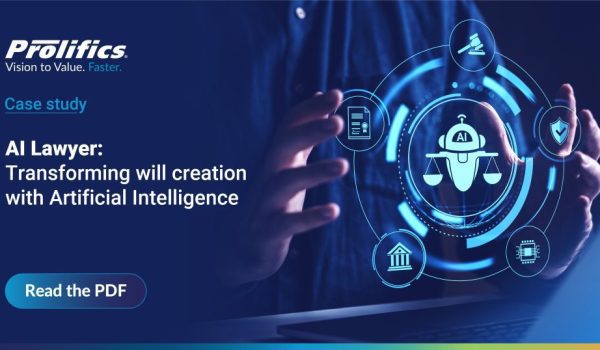Data drives the business world. Accordingly, between customer relations and evolving trends, companies that fail to ensure the accuracy and veracity of their data only hold themselves back. The most recent statistics indicate a willingness among companies to spend extensively on data. Despite the 2020 setbacks brought on by Covid-19, the investments are only increasing. To truly leverage the coming years, IT and business leaders must plan wisely, with an eye toward emerging trends in data analytics, to maximise profits and productivity.
What should you be on the lookout for in 2022? Consider these five data analytics trends.
1. Master Data Management
Although this is a well-established area, master data remains the heart of your business. It’s the high-value information that provides critical insights into everything that makes your company tick: data on your customers, vendors, products, partners, staff, accounts, and more. Therefore, it stands to reason that any weak spots in your Master Data Management (MDM) strategy can have severe rippling impacts throughout your organisation. Strengthening your MDM approach is paramount to achieving your operational goals.

MDM encompasses a set of strategies used to manage an organisation’s master data. Before we discuss your strategy, however, it’s important to first establish a firm grasp on what your master data is, and how it may relate to other data sets.
Think of master data as your end-all-be-all pool of information—a golden record, if you will. There is only one record of this data and it should serve as the data your entire organisation leans on. For example, you should only have one set of data for any particular item your company sells regarding its specifications.
Whereas you should only have one set of master data, you may have several sets of “wrong” or “incorrect” data. “Wrong” data doesn’t necessarily imply factual error. It may contain the correct information, but be the wrong type for a given situation. Similarly, incorrect data is an inappropriate entry of the data you need. For example, you may have three different profiles for the same customer or employee. Wrong or incorrect data may lead to disagreements on which is correct, or how many people exist with the same name. Organisations can rectify these disagreements with a robust and clearly articulated MDM strategy.
2. Data Fabric
As companies source data from seemingly infinite sources, ensuring that data flows in one coherent stream is crucial to using and understanding it. Big data has boomed over the past decade as hybrid clouds, AI, Internet of Things (IoT), and edge computing entered the mainstream. Data Fabric aims to unify your data sources to curb challenges like data silos, security risks, and data bottlenecks.
There are more data sources available today than there were yesterday. The same will be true tomorrow, the day after tomorrow, and the day after that. A few of those sources may be in real-time; some might be structured, whereas others are unstructured. That data must be cleaned, verified, and handled before you can leverage it for analytics and machine learning.
Data Fabric essentially comprises the architecture of intelligent and automated systems that facilitate end-to-end integration of all those data pipelines. It fills the gaps between structured and unstructured data streams that otherwise would not “play well” together. You may think of Data Fabric as a blanket covering your messy data landscape. However, instead of taking an “out of sight, out of mind” approach, Data Fabric unifies the mess to drive decision-making. With more and more data sources popping up every day, it’s no wonder that forecasters expect the Data Fabric market to grow at a CAGR of 25.90% by 2027.
3. Process Mining
Among modern data analytics trends, one cannot overlook process mining. The practice is crucial to eradicating bad habits and patterns and running your organisation efficiently.
Process Mining assesses your organisation’s operational processes, extracting information from event logs, databases, information systems, and management software. With this information in hand, process mining then dissects which practises work and which need improvement. Organisations of all sizes—from fresh start-ups to international enterprises—can maximise efficiency by understanding how their processes work.

Think of process mining as a full audit of your operational processes. Are they running as efficiently as possible? Might there be areas to streamline that will increase productivity? Are you taking any unnecessary steps?
Process mining tells organisations what’s going on internally. Instead of just relying on assumptions, business leaders can make data-driven choices to expand their operations with increased productivity.
4. Operational Analytics (AnalyticsOps)
Operational Analytics (OA), also known as AnalyticsOps, leverages real-time data to support decision-making on the fly. These data analytics trends all seek to enhance your organisation’s decision-making process, and AnalyticsOps is no different. AnalyticsOps strengthens functionality by improving client experience, bolstering inventory management, and increasing overall productivity.
In short, AnalyticsOps is about turning insight into action, ASAP. What good is all that information if it just sits in a data warehouse and doesn’t promote action or change? Instead, put that data to work in the various tools that drive your business.
As a case study on leveraging AnalyticsOps, let’s examine how Wichita State University organised its student data to help at-risk students achieve their diplomas.
WSU, known as one of the first data-rich institutions, was an early adopter of AI technology. Software from IBM ran daily audits to strengthen predictive modelling and reporting capabilities. Their IT environment spanned more than 100 databases, an entire student information system, and protected research data.
By leveraging data analytics trends like AnalyticsOps, WSU better poised itself to identify students at risk of not graduating or struggling academically. With this data, WSU puts those students on a straightforward path to success—while saving considerable capital on their data management strategies.
5. Data Democratisation

Large corporations generate significant quantities of data every minute of every day—not to mention the avalanche of information coming at them from outside as well. Ideally, they’re leveraging all this information to grow and flourish. However, making informed choices can prove difficult when that data gets trapped in information silos. As a workaround, major enterprises turn to analytics trends like data democratisation, allowing for a free—but not wildly uncontrolled—flow of data throughout the company.
Data democratisation aims to make certain data accessible and functional for all employees and stakeholders within a company. This means more refined data capture, yes, but also educating team members on reading and using that data to make better decisions—regardless of their technical background.
To implement this sort of democratised system within your organisation, you need to first implement a modern data architecture that leverages business intelligence tools and platforms. At the same time, while you can invest in all the hi-tech tools in the world, you’ll still need to develop new habits and processes within the organisation. It takes time to change old habits, but data democratisation proves its worth in the end.
Refine Your Data Analytics Processes With Prolifics
Considering the pace at which information technology continues to develop these days—some even refer to this as the “Fourth Industrial Revolution”—modern businesses must leverage data analytics trends to stay ahead (or even just to keep afloat). However, whether you run a small business or a large multinational enterprise, you’ve got a lot on your plate already. It’s hard to keep up with the latest and greatest, especially when the latest and greatest seem to change day-to-day.
That’s where Prolifics can step in to help. With over 40 years of experience transforming businesses of all sizes into competitive, data-driven enterprises, we at Prolifics keep our thumb on the pulse of technological change. By partnering with our data experts, you can keep ahead of the competition with best practices and the latest trends in data analytics.
Are you ready to elevate your data analytics processes to achieve full end to end visibility? Get in touch with Prolifics today to learn how data can increase your organisational productivity across the board.








